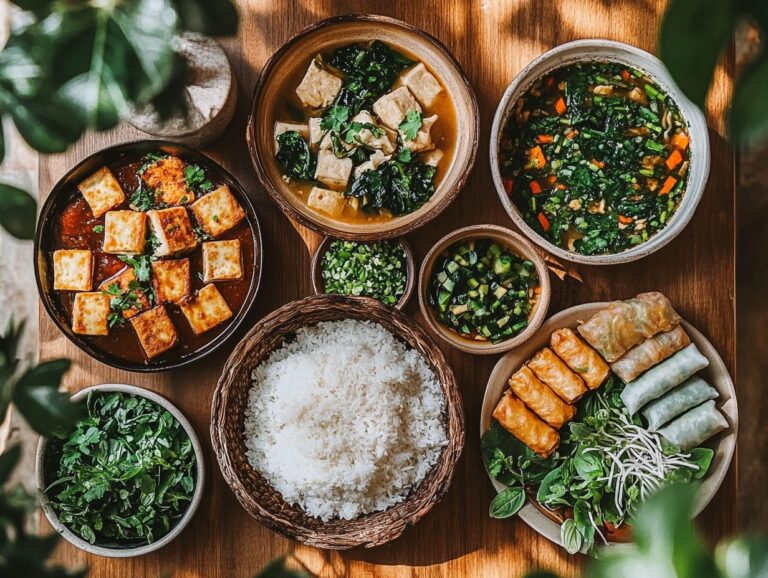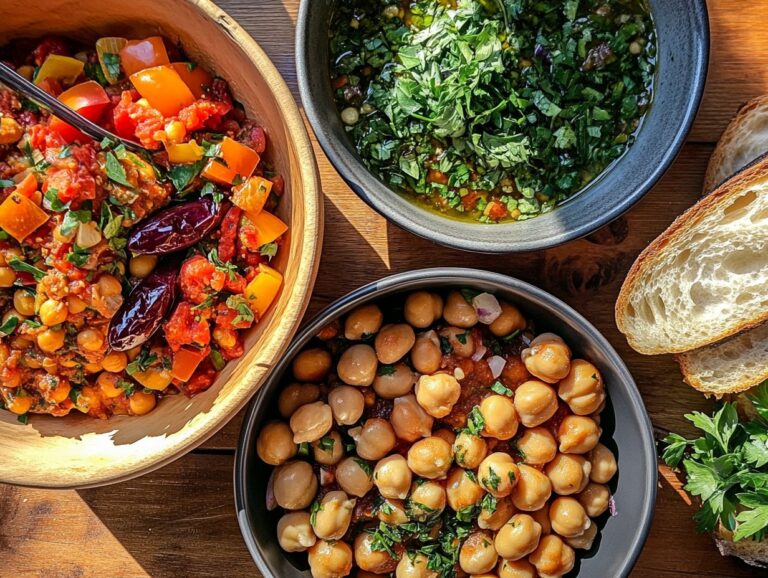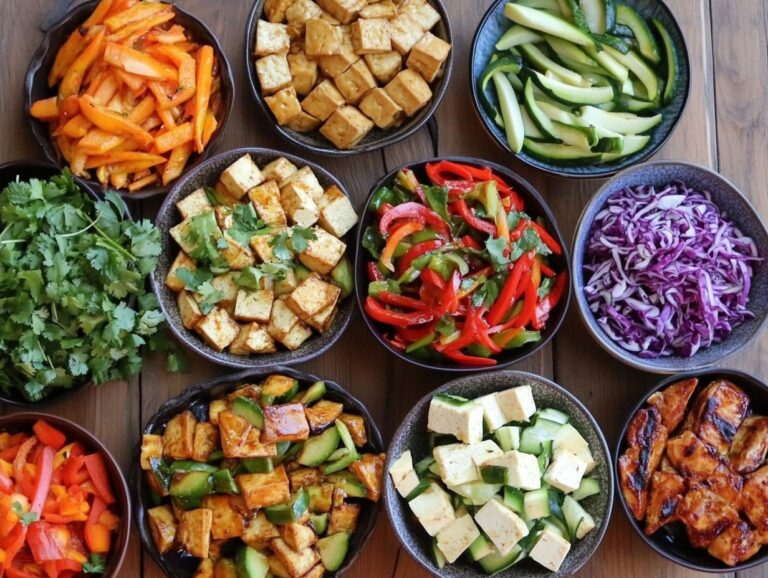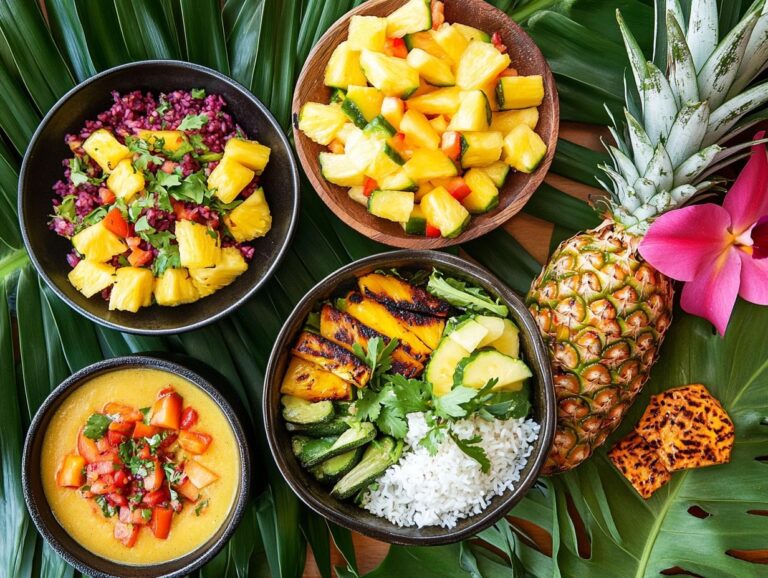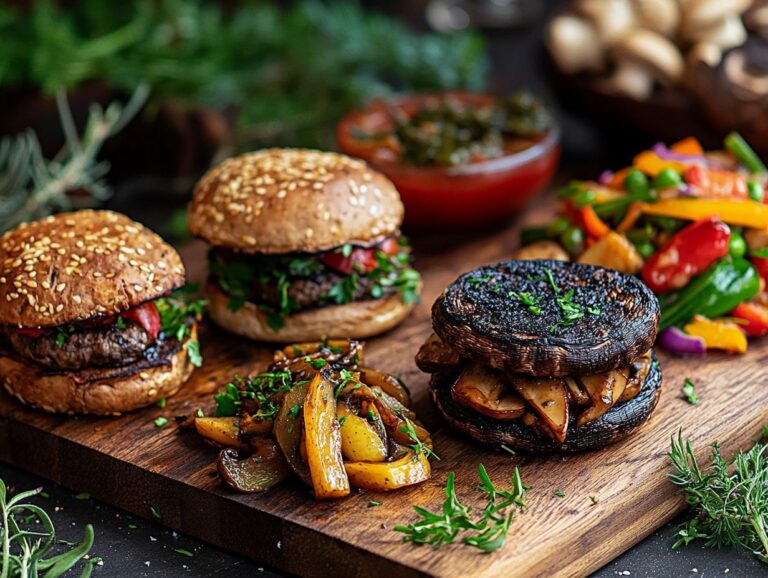Kelp noodles offer a delicious way to enhance your meals while enjoying the benefits of a raw vegan food. Made from sea vegetables, these noodles are not only nutrient-rich but also provide unique textures and significant health advantages. This article explores the nutritional and environmental benefits of incorporating kelp noodles into your diet, provides guidance on how to prepare them properly, and shares tasty raw vegan recipes featuring kelp noodles.
What are Kelp Noodles?
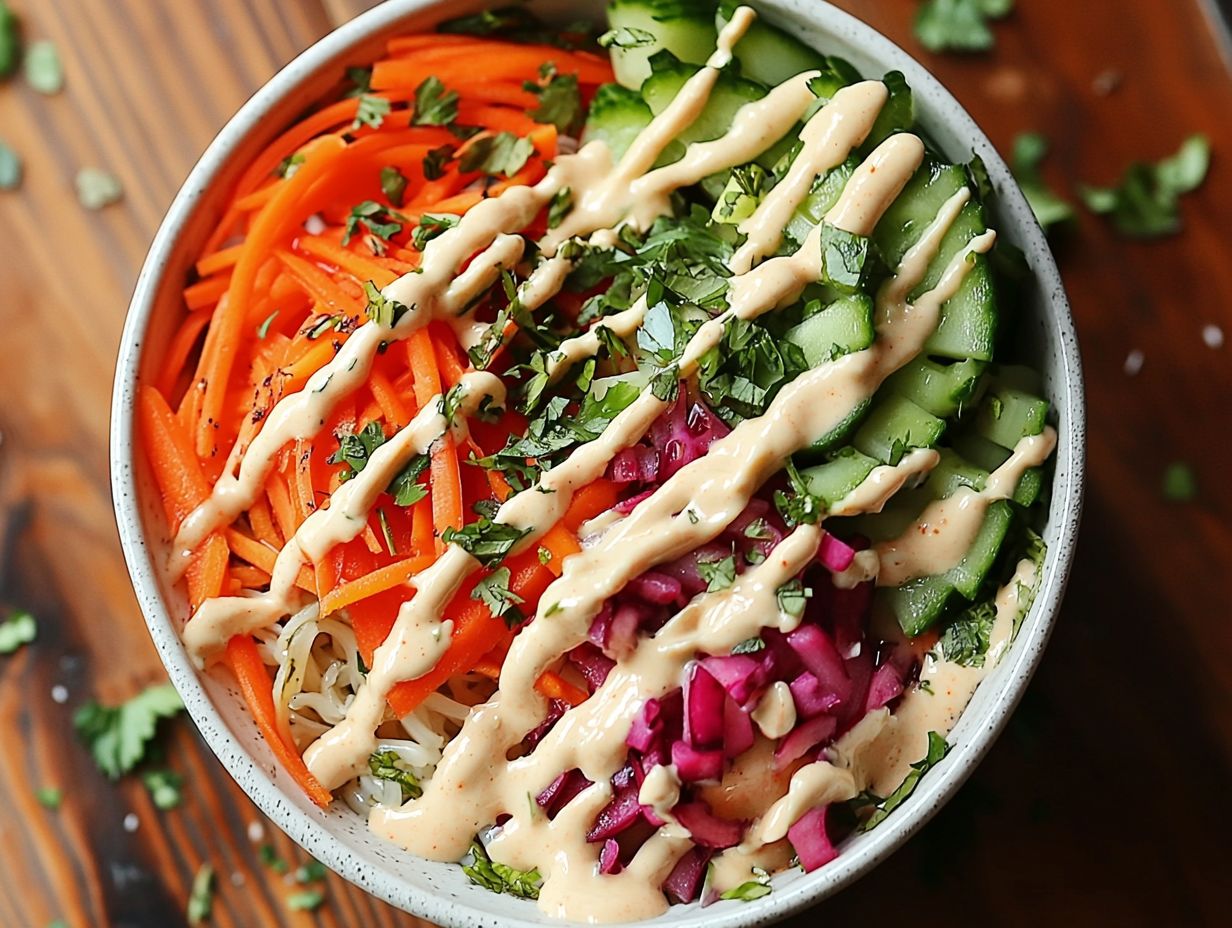
Kelp noodles are a unique and versatile ingredient made from sea vegetables, offering a delicious alternative pasta that caters to gluten-free, raw vegan, and plant-based diets. With their unique twist on traditional noodles, kelp noodles fit well into diverse culinary and dietary preferences.
These gluten-free, low-calorie, high-fiber noodles are ideal for creating nutrient-dense meals that align with healthy eating patterns while accommodating diverse dietary needs. Kelp noodles are particularly rich in nutrients, especially iodine, and contain only 9 calories and 0.5 grams of carbohydrates per serving (1 ounce), making them a nutritious and low-calorie choice for meal prep in healthy eating routines. They also provide moderate amounts of calcium (4% of daily requirements) and iron (2% of daily requirements).
This article outlines the health benefits of kelp noodles, their culinary uses, cultural significance, and how they fit into evolving food trends.
Health Benefits of Kelp Noodles
Kelp noodles offer numerous health benefits. They are low in calories and carbohydrates, high in dietary fiber, and provide well-absorbed micronutrients such as iodine, calcium, and iron. Kelp noodles are suitable for a variety of diets, being low-calorie, gluten-free, and plant-based.
- Nutrient Density: Kelp is a nutrient-dense food that contains a variety of essential vitamins and minerals. A 1-ounce (28 grams) serving of kelp noodles delivers 4% of daily calcium needs, 2% of daily iron needs, and approximately 18 mcg of iodine—12% of the recommended daily intake for adults, along with other vital antioxidants and dietary fiber.
- Low in Calories: With just 9 calories per 1-ounce serving, kelp noodles are primarily composed of water, and most of their volume comes from fiber.
- Low in Carbohydrates: Compared to traditional noodles, kelp noodles are extremely low in carbohydrates, with only 0.5 grams per serving.
- High Fiber Content: Kelp noodles contain 5 grams of fiber per serving, accounting for 20% of the daily recommended intake for adults. Their high water and fiber content can help with weight management by promoting a feeling of fullness.
Dietary Considerations for Kelp Noodles
Kelp noodles are an excellent choice for healthy eating patterns and are suitable for individuals following specific diets. They are vegan, vegetarian, gluten-free, and low in carbohydrates, making them a popular alternative to traditional noodles. Their versatile nature allows for culinary creativity in vegan cuisine, accommodating innovative dishes tailored to various dietary preferences.
- Vegan and Vegetarian Diets: Being plant-based, kelp noodles are appropriate for those following vegan or vegetarian diets. They can be used in various dishes, including pasta, salads, stir-fries, and soups, offering plant nutrition with vegan protein options.
- Gluten-Free Diets: Kelp noodles are gluten-free, making them suitable for people with celiac disease or gluten intolerance.
- Low-Carbohydrate Diets: Due to their extremely low carbohydrate content compared to traditional noodles, kelp noodles are a great option for individuals following low-carbohydrate or ketogenic diets. They can be incorporated into dishes like pasta, salads, and soups, or enjoyed alone as a snack. Their low glycemic index adds to their suitability for alternative diets.
Culinary Uses and Cultural Significance of Kelp Noodles
The unique flavor and texture of kelp noodles make them a versatile addition to a variety of dishes. Their culinary applications differ across cultures, often combined with fresh ingredients and spices to create distinctive recipes with exotic flavors and vibrant colors, contributing to food presentation and culinary innovation.
- Salads and Crudités: Kelp noodles can be enjoyed raw in Asian-inspired salads with fresh vegetables, avocados, or proteins like tofu or shrimp. Dressings and toppings can further enhance their taste.
- Stir-Fries and Hot Dishes: They can be added to stir-fries, soups, or hot broths, where they absorb the flavors of accompanying ingredients, creating savory dishes with umami flavor profiles.
- Snacks: Kelp noodles can be consumed as a snack or light meal, often paired with dipping sauces or seasonings for a quick meal solution.
In Asian cuisines, particularly Japanese, Korean, and Chinese, kelp noodles hold cultural significance as traditional foods that have been enjoyed for centuries. This culinary exploration embraces a variety of cooking techniques and food swaps, offering a gourmet vegan experience that celebrates unique ingredients.
Kelp Noodles and Food Trends
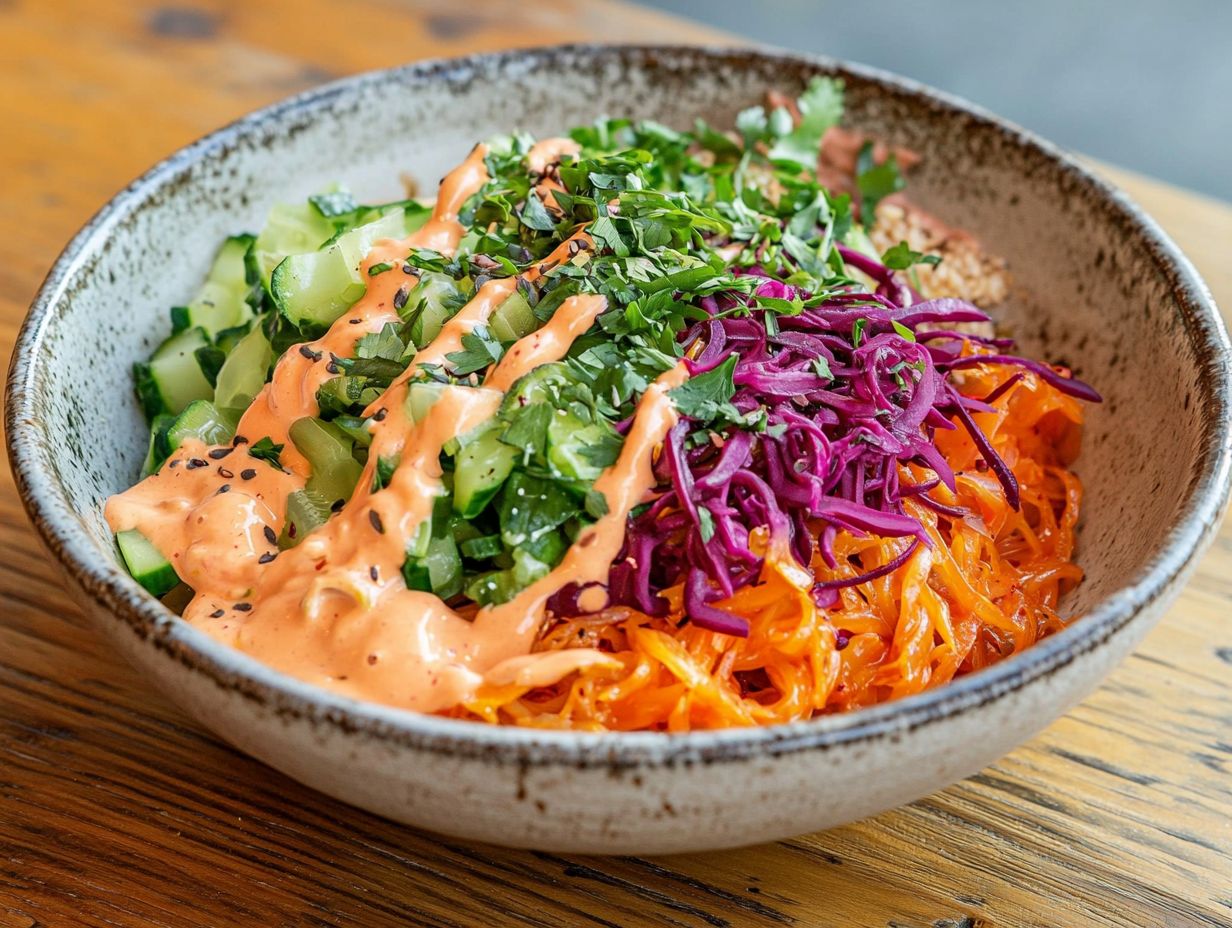
Kelp noodles are gaining popularity as an ingredient due to the growing trend toward plant-based, low-calorie, and low-carbohydrate foods. They provide a healthy and environmentally friendly alternative to traditional noodles and can be incorporated into a range of dishes, supporting eco-conscious eating and sustainable eating practices.
Kelp noodles are also a good source of iodine, which is vital for thyroid health; however, it is essential to consume them in moderation, as excessive iodine intake can lead to thyroid issues. Moreover, kelp is a sustainable food choice, requiring minimal water and no fertilizer, while also helping absorb carbon dioxide. This eco-friendly attribute aligns with health-focused and holistic nutrition lifestyle choices.
Nutritional Information
According to the USDA, a serving of 1 ounce (28 grams) of kelp noodles contains the following nutrients:
- Calories: 9
- Protein: 0.4 grams
- Total Fat: 0.1 grams
- Saturated Fat: 0 grams
- Carbohydrates: 0.5 grams
- Fiber: 5 grams
- Sugars: 0 grams
- Vitamin A: 0.1%
- Calcium: 4%
- Iron: 2%
- Magnesium: 2%
- Potassium: 1%
- Sodium: 0.6%
- Zinc: 1%
- Selenium: 1%
- Copper: 0.1%
- Manganese: 0.3%
- Phosphorus: 0.1%
- Vitamin K: 0.1%
With their myriad health benefits and culinary versatility, kelp noodles are an excellent addition to any diet, offering opportunities for culinary creativity and recipe inspiration across various cuisines and meal ideas.
The Benefits of Raw Vegan Kelp Noodle Recipes
Raw vegan kelp noodle recipes offer numerous benefits, including health advantages associated with the high nutrient density of kelp noodles, as well as culinary benefits that promote creativity in meal preparation. These recipes serve as a platform for gourmet cooking and food art, incorporating unique flavors and creative cooking methods.
By incorporating these recipes into your diet, you may experience improved digestion, increased energy levels, and exciting new flavor combinations that are both delicious and nutritious. The inclusion of fresh herbs, seasonal ingredients, and vegan substitutes enhances the taste experiment and culinary exploration inherent in raw vegan cuisine.
Nutritional Benefits
Kelp noodles are highly nutritious, providing essential vitamins, minerals, and antioxidants that are important for a healthy raw vegan or plant-based diet. They are rich in dietary fiber, which aids digestion and contributes to overall health and wellness, aligning with health-conscious and vegan lifestyle choices.
The benefits of kelp noodles include:
- High Iodine Content: Despite being low in calories, kelp noodles boast a high iodine content, a vital nutrient that supports healthy thyroid function. A well-functioning thyroid is crucial for metabolism, hormone production, and energy levels. Kelp noodles are especially beneficial for those who require iodine supplementation as part of a balanced diet.
- Calcium and Magnesium: Kelp noodles are an excellent source of magnesium, which is essential for muscle and nerve function, blood glucose control, and bone development. Calcium is also a key component of a healthy diet, necessary for the proper functioning of the circulatory, muscular, and nervous systems. Consuming kelp noodles is an effective way to obtain these nutrients without adding unnecessary calories.
- Low Glycemic Index: Kelp noodles have a low glycemic index, which helps regulate blood sugar levels, making them a nutritious alternative for healthy eating.
Environmental Benefits

Kelp noodles offer significant environmental benefits as they are made from seaweed, a sustainable and eco-friendly food source. Incorporating kelp noodles into one’s diet is an excellent way to practice sustainable eating and minimize the environmental impact associated with grain production. This approach encourages eco-conscious eating, which is essential for maintaining a balanced and sustainable diet.
Kelp thrives in nutrient-rich ocean waters and does not require artificial fertilizers or freshwater, resulting in a minimal ecological footprint. This makes it an attractive alternative for individuals seeking healthy food options that are also environmentally responsible.
Additionally, supporting local produce like kelp through community-supported agriculture (CSA) initiatives strengthens local economies and fosters community support networks. By backing these efforts, individuals contribute to the overarching goals of food sustainability and environmental health, promoting practices that help preserve ecosystems while offering diners nutritious choices.
How to Prepare Kelp Noodles for Raw Vegan Recipes
Preparing kelp noodles for raw vegan recipes is simple and offers a wonderful opportunity to experiment and get creative in the kitchen. This involves exploring cooking challenges and kitchen tips to enhance culinary creativity.
These noodles can be rinsed and combined with fresh ingredients and vegan protein, serving as a light and healthy base for a variety of gourmet recipes tailored to specific dietary needs.
Tips for Proper Preparation
Kelp noodles are best enjoyed when properly prepared through soaking, which enhances their chewiness, and by experimenting with various seasoning techniques to elevate their texture and flavor. This preparation allows them to shine in a variety of raw vegan dishes, offering meal variety and unique taste experiences.
Key tips for preparing kelp noodles include soaking them to improve their chewiness and trying out different seasonings to enhance the overall taste experience. Embracing garnishing techniques and exploring diverse flavor combinations can greatly improve food presentation and meal diversity.
To create a satisfying contrast, consider pairing kelp noodles with crunchier ingredients like fresh vegetables or nuts. This not only boosts the nutritional profile but also adds an interesting layer to each bite. For example, simply slicing carrots, cucumbers, or bell peppers into thin strips can provide a delightful textural juxtaposition, while toasted sesame seeds can introduce a nutty flavor that beautifully complements the noodles. Consider adding vibrant sea vegetables or sprinkling nutritional yeast for an added umami flavor and minerals.
Additionally, colorful sauces made from blended avocados, citrus juices, or tahini can be drizzled on top, resulting in innovative dishes that are both visually appealing and packed with diverse flavors. Whether incorporated into a vibrant salad, a hearty stir-fry, or a creative wrap, integrating kelp noodles opens up a world of culinary possibilities, inviting chefs to explore their creativity in the kitchen. These sauces can also be an opportunity to experiment with exotic flavors and try new food pairings.
Delicious and Nutritious Raw Vegan Kelp Noodle Recipes
Delicious and nutritious raw vegan kelp noodle dishes not only offer a variety of menu ideas but also highlight the unique flavors of these noodles. These recipes are perfect for those following a plant-based or gluten-free diet and seeking healthy eating alternatives.
The diverse preparation methods and flavor profiles showcase the versatility of these recipes, providing meal options for those seeking quick meals that don’t compromise on taste or nutrition. Utilizing simple cooking techniques and seasonal ingredients can lead to exciting culinary innovation.
Raw Vegan Kelp Noodle Salad
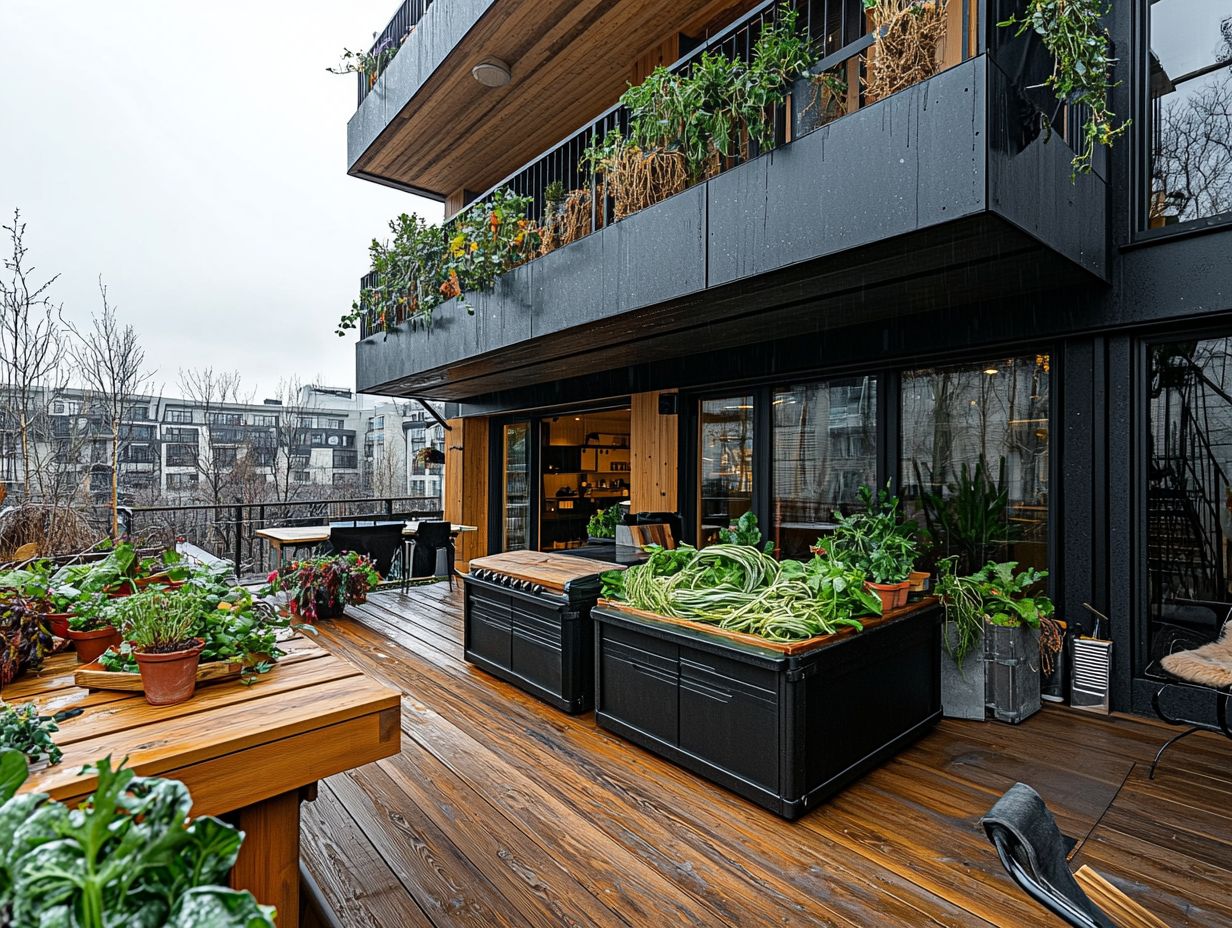
A raw vegan kelp noodle salad is a nutritious and light meal that combines the health benefits of kelp noodles with fresh ingredients and bold flavors. This dish exemplifies the beauty of the raw food movement and showcases innovative food presentation techniques that are both visually appealing and appetizing. It is an excellent choice for those embracing a vegan lifestyle and looking for creative cooking challenges.
The ideal kelp noodle salad features a mix of fresh vegetables, such as shredded carrots, julienned cucumbers, and thinly sliced bell peppers, which provide a crunchy texture and vibrant appearance. These colorful ingredients are complemented by a dressing made from lemon juice, tamari, and sesame oil, adding a delightful tang. Incorporating fresh herbs and plant nutrition can elevate the dish further, making it a nutritious delight.
To enhance the dish further, fresh herbs like cilantro or parsley, as well as sesame seeds or crushed nuts, can be included. By employing careful garnishing techniques and arranging the ingredients in an attractive manner, this nutritious dish can become a beautiful centerpiece for any meal or event. It also aligns with eco-friendly and health-conscious lifestyle choices.
Raw Vegan Kelp Noodle Stir-Fry
A raw vegan kelp noodle stir-fry is a dish bursting with delicious flavors and textures, making it a quick, nutritious, and satisfying meal. This dish features fresh vegetables and aromatic seasonings that enhance the taste profile of the kelp noodles. It is a perfect example of plant-based culinary exploration and creative food preparation.
Vibrant vegetables such as bell peppers, snap peas, and shredded carrots add both color and essential nutrients. Soaking the kelp noodles in water for 10 minutes before adding them to the stir-fry helps them soften and absorb flavors.
Briefly sautéing the vegetables in a splash of sesame oil infuses them with flavor while maintaining their crunchiness. A mix of soy sauce, ginger, and garlic can be incorporated during the cooking process to elevate the overall taste.
The end result is a delightful stir-fry that combines the health benefits of kelp noodles with the vital nutrients provided by fresh vegetables.
Raw Vegan Kelp Noodle Soup
A raw vegan kelp noodle soup is a warm and comforting dish that harmoniously combines savory flavors with the health benefits of nutrient-dense ingredients. This delightful soup features kelp noodles and an assortment of fresh vegetables, making it an excellent option for those seeking light meals that nourish the body.
To prepare this tasty soup, start by selecting high-quality kelp noodles, which are known for their low calorie count and rich mineral content, particularly iodine, which is essential for thyroid health. Fresh, vibrant vegetables such as carrots, bell peppers, and leafy greens not only add a pleasing texture but also contribute a variety of vitamins and antioxidants.
Enhancing the dish with a flavorful broth made from mushrooms or miso can elevate the overall taste, adding an umami factor that complements the freshness of the vegetables. Spices like ginger and garlic infuse the soup with warmth, making it an ideal choice for maintaining good health while enjoying a delightful medley of flavors.
Incorporating Kelp Noodles into Your Diet
Kelp noodles are a simple and versatile addition to your diet, providing an opportunity to explore a variety of new flavors.
There are numerous easy meal ideas featuring kelp noodles that cater to a range of lifestyles and dietary preferences, including raw vegan and gluten-free diets.
Ways to Enjoy Kelp Noodles Beyond Raw Vegan Recipes
Kelp noodles can be enjoyed in a variety of ways beyond just raw vegan recipes, making them a highly versatile ingredient suitable for numerous dishes and cuisines. Whether used in gourmet appetizers or as vegan substitutes in traditional recipes, the possibilities for culinary creativity are virtually endless.
Kelp noodles are particularly well-suited for Asian cuisines; they work wonderfully in stir-fries with fresh vegetables and protein sources like tofu or tempeh. Additionally, they can be added to soups, where their unique texture complements broths and provides a nutritious twist to classic recipes.
Beyond traditional Asian dishes, innovative chefs are incorporating kelp noodles into flavors from around the world, such as Mediterranean-inspired salads or as a base for zesty fusion wraps. These unique ingredients invite recipe development and experimentation with gourmet vegan concepts.
Along with their diverse applications, these noodles promote healthy eating habits, being low in calories and rich in minerals, thereby connecting diners to a cultural appreciation of nutritious ingredients. They are a fantastic component of health-focused and sustainable eating practices.
